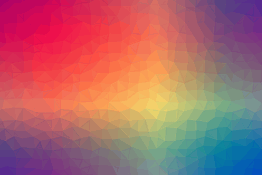What is 10 bit color?
In the world of display technology, one term that you may often come across is “bit depth.” Bit depth refers to the number of bits used to represent a color in a digital image or video. The higher the bit depth, the more colors can be displayed, resulting in a more accurate and lifelike representation of the image.
So what is 10-bit color and how does it differ from 8-bit color? 10-bit color refers to a display that can display 1.07 billion colors, while 8-bit color can only display 16.7 million colors. That’s a huge difference, and it’s one of the main reasons why 10-bit displays are becoming more and more popular, especially in the professional space.
To understand what bit depth is, let’s take a step back and look at how digital images are created. Images are made up of pixels. Each pixel contains a certain amount of color information, which is usually represented as a combination of three primary colors: red, green, and blue. These three primary colors are often abbreviated as RGB.
In an 8-bit image, each pixel is represented by 8 bits of information per color channel, which means there are 256 possible values for each primary color. That gives you a total of 16.7 million possible color combinations. However, in a 10-bit image, each color channel is represented by 10 bits of information, which means there are 1,024 possible values per color channel. This results in a total of 1.07 billion possible color combinations.
Frame Rate Control
Another important feature of a display is frame rate control (FRC). FRC is a method used by some monitors to simulate more colors than their physical panel can display by alternating between two colors at a high frequency. This technique creates an intermediate color between the two colors being displayed, creating the illusion of a wider color gamut. FRC is often used in 8-bit displays to simulate a wider color range.
So how does a 10-bit monitor differ from an 8-bit monitor with FRC? The main difference is that a 10-bit monitor can display all 1.07 billion colors natively, without the need for FRC. On the other hand, an 8-bit monitor with FRC can simulate a wider color range, but it’s not as accurate as a true 10-bit display. FRC can also introduce visual artifacts, such as flickering, which can be both distracting and annoying.
Branding
Banding is an abrupt, unauthorized change in color or brightness when none is desired. The more colors you have to choose from and the less banding you’ll notice, the higher the count you may get, in this example for outputting hues of red, green, and blue. Contrarily, dithering lacks the transitional colors. Instead, it makes a loud transition from one color to another in an effort to conceal banding. Although it falls short of a genuine increased bitrate, it is still preferable to nothing.
Conclusion
In conclusion, when selecting a monitor for professional use, particularly in industries like photography, video editing, and graphic design, bit depth and frame rate control are crucial considerations. A 10-bit monitor provides a broader and more accurate color gamut, improving color accuracy and produces more realistic images. An 8-bit monitor with FRC, on the other hand, can be a suitable substitute if money is tight and you want a wider color spectrum.

